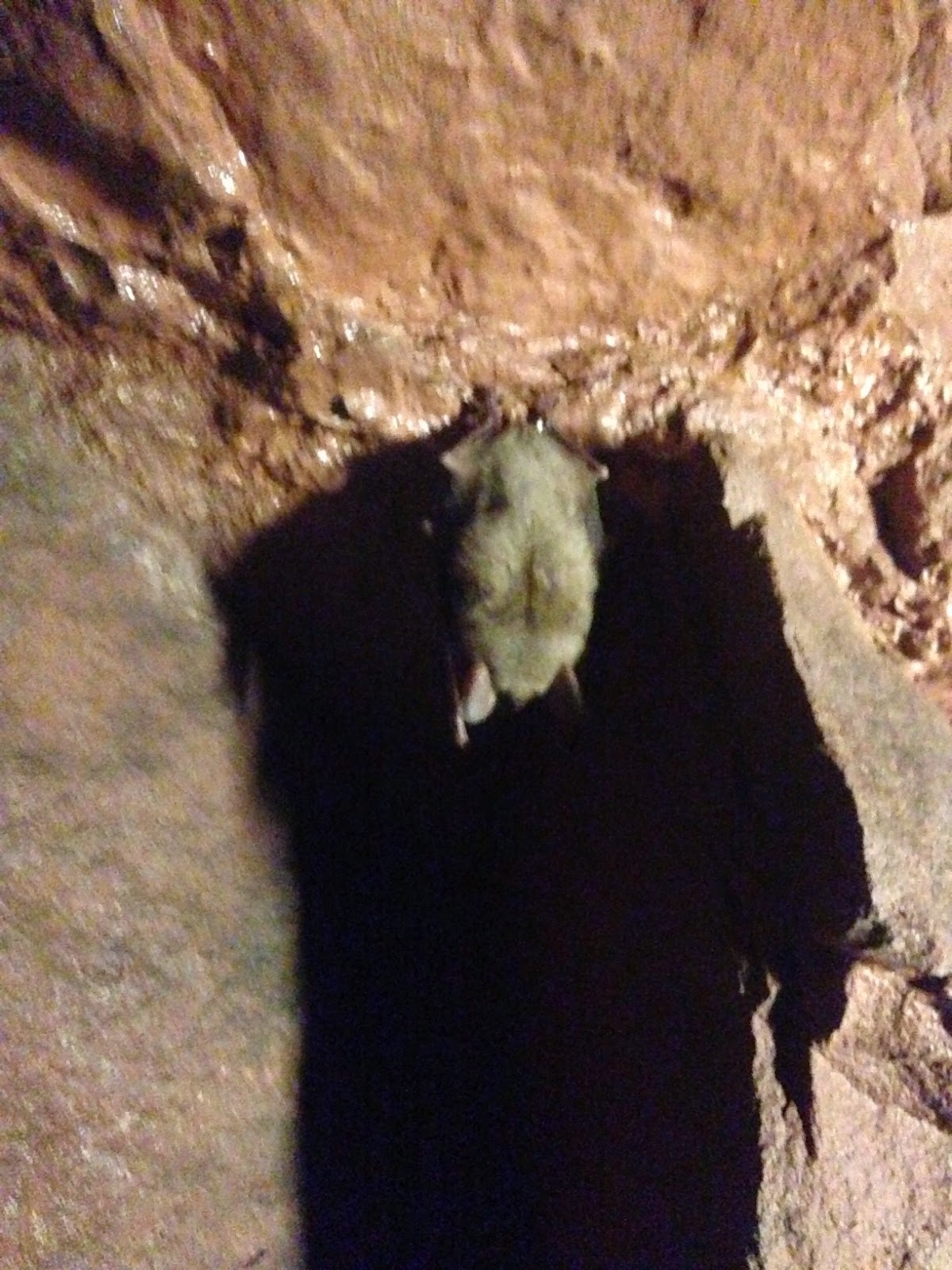O.k., here is my first "real" blog entry.
I always was interested in nature, but I first got in touch with bats when my wife and I lived in Kiel right at the Baltic Sea a couple of years ago. Back then I helped cleaning bat houses and joined people on their tours. However, I never owned a bat detector myself. I also ignored bats for a couple of years.
Only recently I decided to start detecting and observing bats myself. Therefore, I was looking for a bat detector which is affordable but still allows identifying species at a high confidence level. I always wondered why nobody leverages the power of a smart phone to build a bat detector. Fortunately, I came across
this review of still fairly new Echo Meter Touch by Wildlife Acoustics.
I will share my personal pros and cons list regarding the Echo Meter Touch in future blog entries, but I have to say that I was immediately convinced by the general concept and I quickly fell in love with the device once I started playing with it. All screenshots below show spectrograms of bat recordings taken with the Echo Meter Touch. Actually, the screenshots are screenshots from the Echo Meter Touch iPhone app.
The first area I wanted to explore in detail is a beautiful garden in my home city, i.e. Schwetzingen. The area I am taking about is the garden of
Schwetzingen Palace. Unfortunately, the garden is not accessible at night, so that I had to do my nightly tours
on the streets along the borders of the garden.
From what I was told, 5 different bat species where known or assumed to live in the garden of Schwetzingen Palace, i.e.:
- Pipistrellus Pipistrellus / Common Pipistrelle / Zwergfledermaus
- Pipistrellus Nathusii / Nathusius' Pipistrelle / Rauhhautfledermaus
- Eptesicus Serotinus / Serotine / Breitflügelfledermaus
- Nyctalus Noctula / Noctule / Großer Abendsegler
- Myotis Daubentonii / Daubenton's Bat / Wasserfledermaus
As I am only a bat detecting beginner, I need help from others (e.g. readers of this blog) in order to identify bats with a high confidence level, but I have the suspicion that there are more bat species living in the garden of the Schwetzingen Palace. For example, I am pretty sure that there are also Soprano Pipistrelles / Midge Bat living in the area. I am also wondering if I could have heard a brown long-eared bat, a greater mouse-eared bat, and / or a Leisler's bat. Thus, from my "amateur point of view" the following bat species are also possible to live in the garden of the Schwetzingen Palace:
- Pipistrellus Pygmaeus / Soprano Pipistrelle / Mückenfledermaus
- Plecotus Auritus / Brown Long-Eared Bat / Braunes Langohr
- Myotis Myotis / Greater Mouse-Eared Bat / Mausohr
- Nyctalus Leisleri / Leisler's Bat / Kleiner Abendsegler
Actually, based on the AutoID feature of the Echo Meter Touch (using the UK bat classification data) I should have heard the following species so far:
- Pipistrellus Pygmaeus / Soprano Pipistrelle / Mückenfledermaus (PIPY)
- Pipistrellus Pipistrellus / Common Pipistrelle / Zwergfledermaus (PIPI)
- Barbastella Barbastellus / Barbastelle / Mopsfledermaus (BABA)
- Eptesicus Serotinus / Serotine / Breitflügelfledermaus (EPSE)
- Nyctalus Leisleri / Leisler's Bat / Kleiner Abendsegler (NYLE)
- Nyctalus Noctula / Noctule / Großer Abendsegler (NYNO)
- Myotis species (MYsp)
- Plecotus Auritus / Brown Long-Eared Bat / Braunes Langohr (PLAUR)
My feeling is, that all of the AutoId detections could be more or less true, except for the Barbastella Barbastellus (BABA). I assume that the AutoID feature suggested the Barbastella Barbastellus as the Pipistrellus Nathusii is missing in the UK classification data. I assume that the detected Barbastella Barbastellus is actually a Pipistrellus Nathusii. However, as I am a bat detecting beginner, I might be completely wrong. Thus, please help me!!!
Below are screenshots of the various recordings I took with the Echo Meter Touch. I clustered the screenshots of the spectrograms by the species ID provided by the AutoID feature even though I am assuming that a few spectrograms actually belong to different species. For each group of screenshots I tried to include both an expanded and a compressed version (as indicated by the right button on the bottom of the app) as well as different zoom levels and frequency reference lines, so that reader of this blog have a better chance to identify the species.
Please let me know which species you identify and what patterns I should look for in the spectograms in order to correctly identify these species myself in the future without any external help!
I am particularly interested in finding out, which bat species is / are represented by the following two spectrograms which were tagged as MYsp and PLAUR by the AutoID feature of the Echo Meter Touch app:
O.k., here are all the spectrograms:
Spectrograms identified as PIPY by the AutoID feature of the Echo Meter Touch:
Spectrograms identified as PIPI by the AutoID feature of the Echo Meter Touch:
Spectrograms identified as BABA by the AutoID feature of the Echo Meter Touch:
Spectrograms identified as EPSE by the AutoID feature of the Echo Meter Touch:
Spectrograms identified as PLAUR by the AutoID feature of the Echo Meter Touch:
Spectrograms identified as MYsp by the AutoID feature of the Echo Meter Touch:
Spectrograms identified as NYLE by the AutoID feature of the Echo Meter Touch:
Spectrograms identified as NYNO by the AutoID feature of the Echo Meter Touch:
Thank you very much for your help in advance!!!




























































































